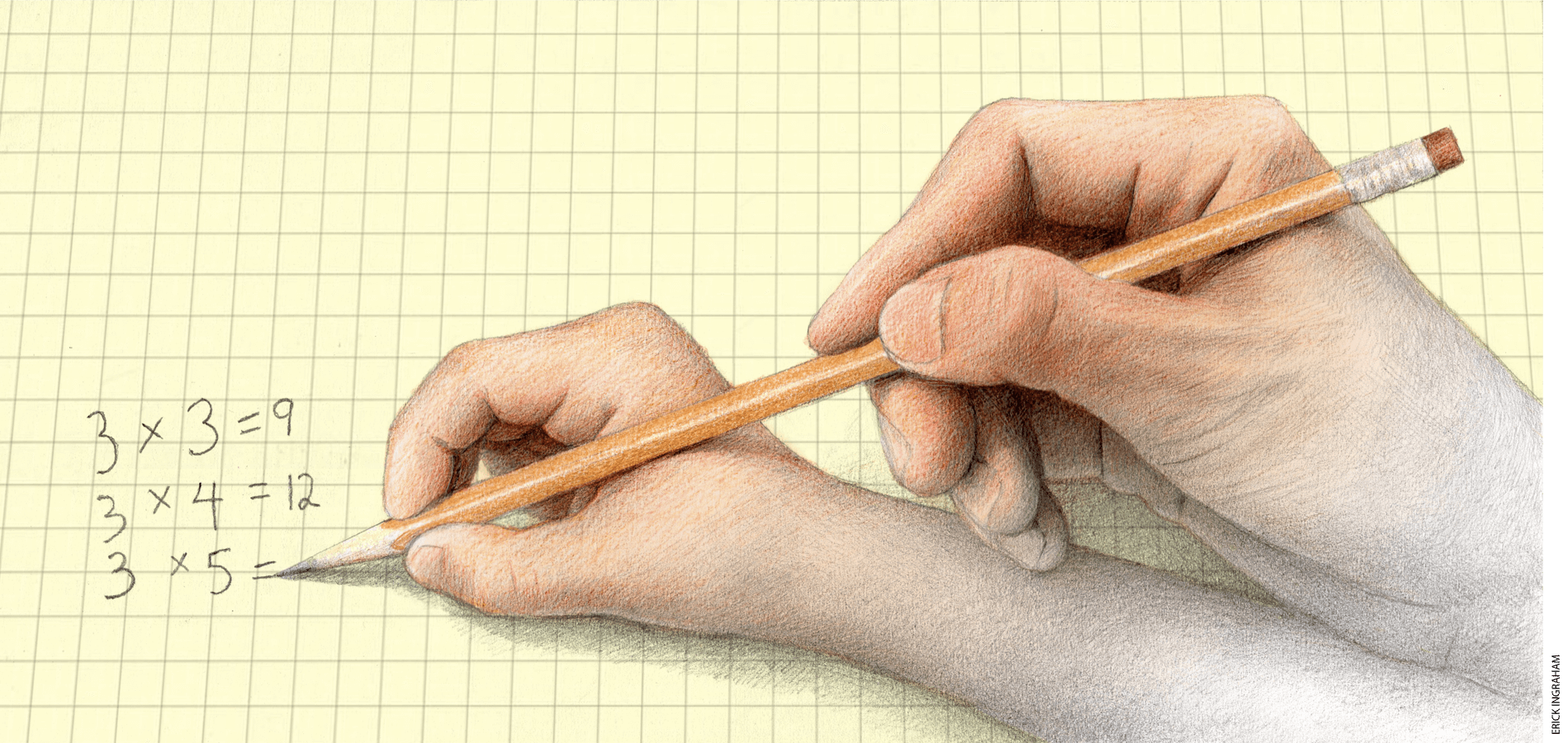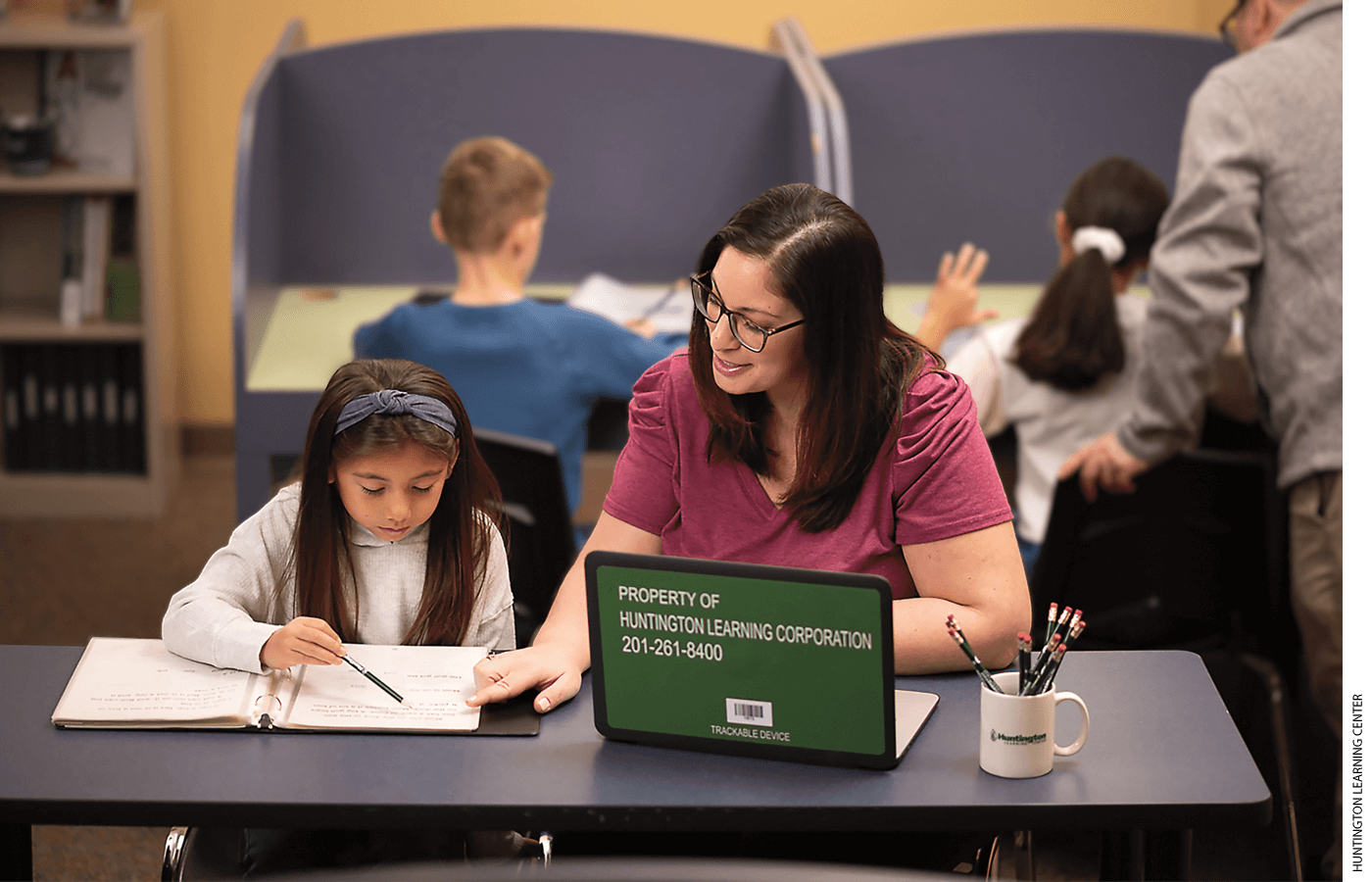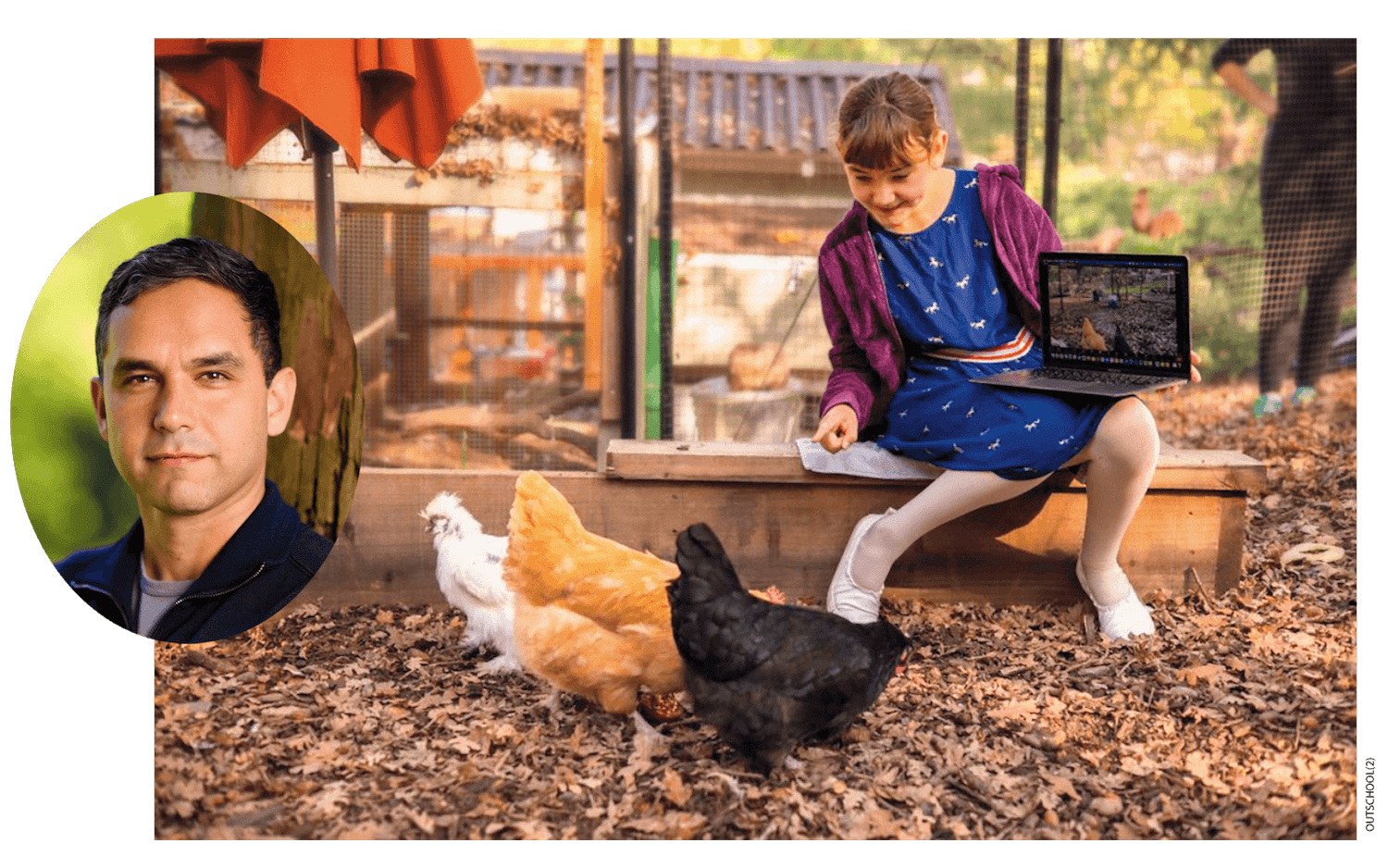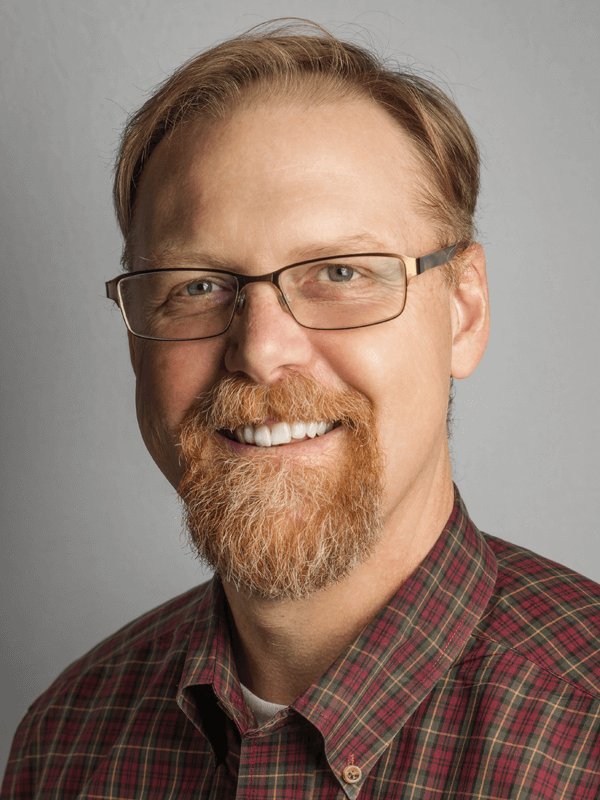
On a hot and humid July afternoon, the Huntington Learning Center franchise in Brentwood, Tennessee, was hopping. Tucked into a strip mall in Nashville’s wealthy southern suburbs and strategically located between some of the state’s best public schools, the tutoring center was occupied that day by elementary and middle schoolers who would probably have preferred to be at camp or the pool. Instead, they were scattered throughout the quiet back room of the center, pencils to paper, working—mostly on worksheets, mostly in reading and math.
Summer is tutoring’s busiest season, which means K–12 students filter through the center all day long instead of just after school, getting help with everything from basic phonics to ACT test prep, either one on one ($75 per hour) or in groups of three or four students with the teacher circulating among them ($60 per hour). On that day, three or four tutors were on the job, ranging in age and experience from new college graduate to retired teacher, checking work, providing feedback, and correcting mistakes.
Franchise owner Brian Telford said that most of Huntington’s students, whether they come in person or work from home on their digital learning platform, arrive at private tutoring because they need remediation in either reading or math. Often, they need help with both. After the standard full evaluation, families often realize their children are missing more core skills than the one they came in for; a good portion of the center’s students have been diagnosed with some kind of learning challenge or disability, most often ADHD.
Telford worked in the corporate world for decades before buying the franchise with his wife in early March 2020, just weeks before Covid-19 shuttered schools nationwide. He declines to divulge which curriculum and teaching methods Huntington uses to get its students back on track, but he said families come to the center for a variety of reasons, looking for academic help for their students. “We are serving a lot of needs,” Telford said. “Sometimes it’s [because of] Covid; sometimes they move, and they’ve missed some school. There have always been students that struggled in school, right? Some of the students we see may have still needed help, even if Covid hadn’t happened.”
Recent research suggests that the number of students seeking help with academics is growing, and that over the last couple of decades, more families have been turning to tutoring for that help. Private tutoring for K–12 students has seen explosive growth both nationally and around the globe. Between 1997 and 2022, the number of in-person, private tutoring centers across the United States more than tripled, concentrated mostly in high-income areas like Brentwood. Many students are also logging onto laptops to get personalized digital tutoring, with companies like WyzAnt and Outschool reporting they’ve enrolled millions of students for millions of hours in private, video-based learning sessions that students access conveniently from home. Market reports estimate the digital tutoring market was worth $7.7 billion globally in 2022, with projections of a compound annual growth rate of nearly 15 percent from 2023 to 2030.
Increasingly, public schools are also offering tutoring to help students catch up on learning they might have lost during the rocky years of school closures and mass quarantines. This tutoring, often embedded into the school day, is mostly provided by nonprofit companies and paid for with Covid relief funds.
While some of tutoring’s rise can be explained by the pandemic and associated learning loss, experts say families are increasingly willing to go outside of school to add academic time to students’ days—and pay a hefty price for it—for a variety of reasons. These include the ease of education technology, declining trust in schools and instructional quality, and shifting attitudes around personalization—the “For You”-ification of our modern digital lives that’s bringing big changes to how families view education.
Questions remain about whether tutoring can help more students reach grade level, though some research looks promising. But there’s no doubt that more students are seeking help, and usually to catch up, not to get ahead: only a small fraction of students are looking for acceleration.
Private tutoring, for the most part, is filling specific holes in students’ foundational skills—holes that schools are somehow overlooking.

When Achievement Dips, Tutoring Rises
When Camille Galdes’s elementary-aged son first started having trouble in math, she assumed it was due to a variety of factors: he’d been in and out of Covid-related quarantines during his kindergarten year in his Arlington, Virginia, school, and his 1st-grade teacher struggled with classroom management and instruction. She believed teachers were working hard to help kids catch up. But her son’s math scores, Galdes said, remained “scary low.” She took him to her neighborhood Kumon center to get one-on-one help. He attended in-person sessions there twice a week and also brought Kumon math home to work on with a parent every night. While he often found his schoolwork confusing and too hard, Galdes said, Kumon’s lessons were organized and incremental, and they targeted the exact skills he was missing.
“At Kumon, he was doing this bite-sized thing, five minutes every day of computational practice,” Galdes said. “It was so effective.”
One big reason more parents are seeking out tutoring is because their kids don’t have the skills they need to succeed in their schoolwork—a problem that long predates the pandemic. National exam scores had been stagnant for a decade, with scores steadily falling for low-achieving students, even before the pandemic school closures exacerbated achievement gaps in both reading and math. According to the latest NAEP results for 13-year-olds, reading scores of higher-performing students fell three to four points between 2020 and 2023, while lower-performing students’ scores fell by an average of six to seven points. Math scores declined even further: by six to seven points for higher-performing students and by as much as 15 points for the lowest performers. Today, students at every achievement level are still struggling to recover.
Experts suggest teachers are finding it difficult to catch kids up on missed material while also presenting new material, according to a 2024 report from testing company Northwest Evaluation Association. As a result, three years after most pandemic school closures ended, test-score gaps continue to widen. The “average student will need the equivalent of 4.8 additional months of schooling to catch up in reading and 4.3 months in math,” researchers wrote. For some groups the gap is even larger—the average 8th grader, for example, would need about nine months, an entire extra year of schooling, to catch up to pre-pandemic levels of learning.
Pandemic school closures certainly caused harm to learning, but research hints that parents were worried about students’ basic reading and math skills before Covid struck. A study by Edward Kim, Joshua Goodman, and Martin West showed that the growth of private tutoring centers in the United States began decades before the pandemic, at the end of the 1990s and early 2000s. And a 2019 Australian study investigating the rise in private tutoring found that often parents believed “the education provided at school is simply not enough to meet a learner’s needs.” Most parents in the small study were employing tutors to fix gaps in their children’s learning, not to accelerate them or get them ahead.
Parents with means may also be turning to tutoring simply because they trust schools less—just as faith in other institutions, including media and government, has fallen. In one recent survey, half of surveyed voters said their trust in public education had declined since the pandemic.
Amir Nathoo, the founder of Outschool, an online tutoring provider that launched in 2015 but saw enormous growth during the pandemic while students were at home, said he’s observed fracturing trust in schools for some time—a fact of life, in his view, that has gone unnoticed and underreported. “Parent trust in traditional schooling methods has been decreasing for a long time. You can see it in the Gallup polls,” Nathoo said. “It’s also true that post-pandemic we saw the English and math scores come down—but what’s missing in all the details is wider trends with mass disillusionment with traditional education.”
Nathoo credits this trend for the more than one million students who have logged on to use Outschool. Customers can browse the platform to shop for a just-right tutor among thousands, each charging their own prices depending on what they teach and how much experience they have—for private tutoring and remediation, but also for other learning like group classes and private music lessons.
As trust in school decays, he said, parents begin looking for alternatives, fragmenting the education landscape.
“The story was: go to a good school, work hard, and get good grades, and you’ll be successful and happy,” Nathoo said. “But no one I know believes this is true anymore.”

Does Tutoring Work?
Emily, a lawyer from Texas, can’t remember exactly where she first heard about Mathnasium, a math-focused tutoring center located near her home in the suburbs of Austin—probably through volunteering at school or at a backyard party in her close-knit neighborhood. But parents in her friend group lauded its benefits often when talking, sometimes under their breath, about their kids’ math troubles. These accolades prompted Emily to view her own son Lyle’s math struggles a little differently. (Emily asked that we use first names only, for the sake of privacy.)
Emily noticed at the end of 1st grade that Lyle hadn’t learned simple math facts such as 2 + 3 = 5, and he frequently got confused on addition and subtraction operations. Math homework, which she often helped with in the evenings, caused him stress, and by the end of 2nd grade this past spring, Lyle was already worrying about how hard multiplication would be in 3rd grade.
“I get the sense they’re not pushing memorization” of math facts at his local public school, Emily said. Yet parents she spoke with who sent kids to Mathnasium two or three times a week were seeing big improvements in their students’ benchmarks and state test performance—some had improved so much they were being invited into the honors math class.
“If I feel like my efforts at self-tutoring at home aren’t getting him where he needs to be, I’d consider using Mathnasium as a support, so it could match where he is on reading and everything else,” she said. “There’s only so much that I know. Why not leave it to the experts?”
Parents may often try tutoring because they hear success stories from other parents—a “whisper network” among families that alerts parents to the potential of tutoring. Alexander Wiseman, a professor of educational leadership policy at Texas Tech University, said his research shows that in many communities around the world—not just affluent ones—it’s common for families to form networks that provide a “shadow education” system of tutoring outside the regular school system. Experts hypothesize that more families are seeking tutoring because of the understood cultural value of education, Wiseman said. Parents assume when kids aren’t doing well in school, getting them access to more learning opportunities is the answer.
In a study of global PISA data, Wiseman found that students are more likely to participate in private tutoring when the perception of school quality drops. Wealthier parents and less-affluent families both seek out private tutoring, his data show, but they may go about it in different ways.
“Often it’s low-income families that are attending schools where it’s more overtly lower quality, because it’s a low tax-base community and they don’t have the same resources, so families will incur the fees of private tutoring,” Wiseman said. “Or often they don’t go through commercial programs as much as they will just do personal tutoring or have family members tutor.”

Yet research shows that the biggest growth in tutoring—at least in walk-in tutoring centers—is happening in wealthy neighborhoods like Brentwood, Tennessee, and the suburbs of Austin, Texas, areas with well-financed public schools that are perceived to be of high quality. The aforementioned study by Kim and colleagues, forthcoming in the journal Education Finance and Policy and titled “Kumon In: The Recent, Rapid Rise of Private Tutoring Centers,” found that more than half of centers like Kumon and Mathnasiusm were located in school districts in the top 20 percent of income distribution.
“It is the families in the richest districts that are pursuing the most tutoring,” said co-author Joshua Goodman, an associate professor at Boston University Wheelock College of Education & Human Development. “But in this paper, we have no information about the reasons why families are using these centers.”
Goodman hypothesized, though, that families may feel pressured about academic success related to getting their child into a good college. They also may calculate that sending their kids to free public school means they can afford to support them with tutoring if needed. Such interventions are generally much less expensive than sending a child to private school.
Families may also flock to tutoring because, like Emily, they hear about other students’ success. Research supports this anecdotal information—tutoring often helps, under the right conditions. Educational psychologist Benjamin Bloom asserted in the 1980s that one-on-one tutoring could lift students’ achievement two standard deviations higher than what they would attain in a general classroom setting. More recent analysis paints a more nuanced, yet still quite positive picture of what tutoring can do. Recent gold-standard studies suggest that both small-group instruction and individual tutoring generate positive impacts in both reading and math. For instance, a study by Jonathan Guryan and colleagues showed that Saga Education’s in-school math tutoring intervention for low-income 9th and 10th graders in Chicago increased math test scores as well as students’ grades in math and non-math courses. In a more recent randomized controlled trial, students receiving high-dosage math tutoring gained half a year of learning compared to a control group receiving remedial instruction.
A recent meta-analysis of 100 controlled trials of tutoring programs, including the Saga study, showed that “high-quality tutoring”—individual or small-group instruction provided by a trained teacher three times weekly for 30 minutes to an hour—improved student achievement, especially in foundational skills in the early grades of elementary school. The tutoring programs examined in the study were nonprofit programs embedded into the public school day.
“We were really blown away by the consistency of effectiveness of tutoring programs,” said Vincent Quan, co-executive director of J-PAL North America and co-author of the study. “We’re not saying tutoring is a silver bullet, but it’s the rare intervention effective at improving learning outcomes for kids. The effect sizes are quite substantial, and remarkably consistent in terms of ability to improve outcomes, including kids who are several grade levels behind.”
In another look at what makes tutoring effective, an Ed Research for Action report found that tutoring had the biggest effects for students in early literacy and middle- and high-school math, and when students had a consistent relationship with a teacher.
“Often you have one teacher trying to teach 30 students at the same time, but [with tutoring] you have a caring educator meeting consistently with one student or a small group,” said Stanford researcher Carly Robinson, who co-authored the report. “So when a student gets stuck on something, a person that has a relationship with this student touches upon the instruction that student needs at that moment. It’s huge.”
EdNext in your inbox
Sign up for the EdNext Weekly newsletter, and stay up to date with the Daily Digest, delivered straight to your inbox.
What the Future Holds
Digital tech has made private tutoring more accessible, more efficient, and more affordable. Students whose families can’t afford to pay $75 an hour at an in-person center can now log on from home to access a variety of online tutors, including Outschool, Wyzant, and Anchorbridge, and often find someone who can cater to their specific skills and needs—someone who can offer help in French to a student with ADHD, for example. Online tutoring is less expensive than in-person programs. Khan Academy’s Khanmigo chatbot can be a student’s virtual AI tutor, no Zoom meeting required, for $4 a month, and nonprofits like Learn to Be work with homeless shelters and community centers to give virtual reading and math tutoring free to kids who can’t afford it and often might need it the most.
Indeed, tutoring might be expanding in large part because technology has enabled it. Tech futurists envision a time, just around the corner, where all students get a fully personalized education experience. “Every kid has a different knowledge frontier,” said Justin Skycak, the director of analytics at the individualized online learning platform Math Academy. “Even if you manage to somehow miraculously find a problem that is the right level of difficulty for everybody to work on—that’s not even realistic because it can be too hard for some students and too easy for others—but even if you did, probably some students would find it a little easier than others and be ready to move on. Other students would need more practice. What do you do?”
Math Academy has incorporated research on how the brain learns—a mix of cognitive science and educational psychology often loosely referred to as “the science of learning”—into their individualized courses. Each online course, from arithmetic to algebra, breaks up learning into small, digestible chunks, provides clear explanations, and, above all, incorporates lots of practice—techniques commonly employed by successful tutors everywhere.
Classroom teachers use this kind of instruction a lot less often for a variety of reasons, including lack of professional training, ineffective curriculum, and school district philosophies that de-emphasize memorization and practice in favor of open-ended problems. That was the case in Anna Stokke’s daughter’s math class in Canada a little over a decade ago. Her frustrated daughter was in 3rd grade when Stokke, a professor of mathematics at the University of Winnipeg in Winnipeg, Manitoba, discovered that key pieces of evidence-based math teaching had literally been banned from schools: notably, requiring students to memorize multiplication tables and showing them the “standard algorithm,” or standard series of steps to solve basic arithmetic problems, like vertical addition with a carry. (Manitoba has since rescinded the ban due to Stokke’s and other math professors’ advocacy, though schools there aren’t required to present this material until much later than in the States.)
In response, Stokke and her husband, also a mathematician, and two other math professors started a nonprofit tutoring center in a church basement to teach kids “actual math” after school, charging parents just enough to cover expenses. The classes, still going today, aren’t technically tutoring in that they are not providing individualized or small-group instruction, Stokke said. They’re small math classes of about 15 students each. But the evidence-based teaching techniques they deploy are similar to those used in Math Academy’s tutoring: direct, clear explanations and modeling of problems; strong feedback and guidance to correct mistakes; and lots of practice.
The center’s teachers begin each class with several minutes of math fact drilling—exactly what Camille Galdes said had worked so well with her son at Kumon—and students take more practice problems home to work on. Stokke said that if more public school teachers employed the techniques that tutors use, fewer families would have to go around the system and pay for tutoring.
“This is the thing with math: all you have to do is make sure that students get a lot of practice on core skills and build up gradually and scaffold instruction. In the younger years, concentrate on core skills before you move on to more complex problems” and provide “at least four minutes of practice on basic skills like times tables and math facts every single school day,” Stokke said. Because math knowledge is cumulative, she added, kids fall behind if they don’t learn the building blocks in time. “We have to do a better job in every year, at every grade, trying to close the gaps.”
Stokke said parents should go to their kids’ schools and ask for better teaching, but often parents don’t want to rock the boat, so those who can afford it make their own arrangements for remediation. They self-insure so their kids won’t fail, leaving less-fortunate kids to fall even further behind, she noted.
“It’s hard to understand why this is complicated, because it isn’t,” Stokke said. “It’s unacceptable. People shouldn’t be paying for tutoring.”
A previous version of this story indicated Huntington Learning Center hires undergraduates; their tutors all hold bachelor’s degrees.
Holly Korbey is an education journalist, author, and editor of The Bell Ringer Substack. She lives in Nashville, Tennessee, with her family.
This article appeared in the Winter 2025 issue of Education Next. Suggested citation format:
Korbey, H. (2025). The Tutoring Revolution: More families are seeking one-on-one help for their kids. What does that tell us about 21st-century education? Education Next, 25(1), 16-21.


